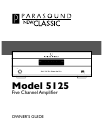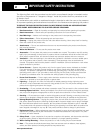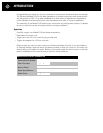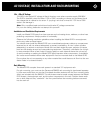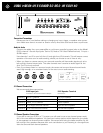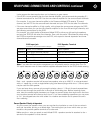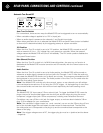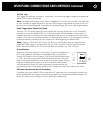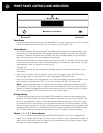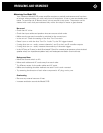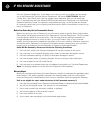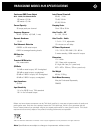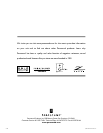
AC VOLTAGE, INSTALLATION AND RACK MOUNTING
3
115v - 230v AC Voltage
110-120V is the typical AC voltage in North America; most other countries supply 220-240V.
The 5125 is internally wired for either 115V or 230V, according to where you purchased it and
the voltage that is marked on its carton. If you plug a unit that is wired for 115V into a 230V
outlet it can damage it.
Note: Only a qualified repair technician should make AC voltage conversions.
For your own safety, please do not attempt this yourself!
Installation and Ventilation Requirements
Install your Model 5125 away from heat sources such as heating ducts, radiators, or other heat
producing components. Always position it horizontally.
Observe the following ventilation guidelines when installing the Model 5125 in an equipment
rack or any other enclosed space:
You should never install the Model 5125 in an unventilated equipment cabinet or compartment
because hot air will not exhaust adequately to prevent overheating. Air won’t often circulate
adequately in a cabinet or enclosure whose front and back sides are open; pockets of intense
heat can still develop around any heat-producing equipment. Therefore, a ventilation fan is high-
ly recommended. Allow a few inches of empty space on each side and above the unit and try
to avoid crowding or stacking the Model 5125 tightly between other components. A ventilation
fan is also recommended where other equipment must be mounted close to the Model 5125.
Do not place the unit on carpeting or any other material that could obstruct air flow into the ven-
tilation holes in its chassis bottom.
Rack Mounting
The Model 5125 occupies three rack spaces in a standard 19” equipment rack.
For rack mounting, you must use the Parasound RMK33 rack mounting kit (purchased separate-
ly). We recommend that you use the 8 insulated shoulder washers with the four mounting bolts
which are included with the RMK33. This eliminates metal-to-metal contact between the Model
5125 chassis, the equipment rack, and the other components in the rack. Position these wash-
ers on both sides so they “sandwich” the front panel before the mounting bolts are screwed
into the rack rail.



